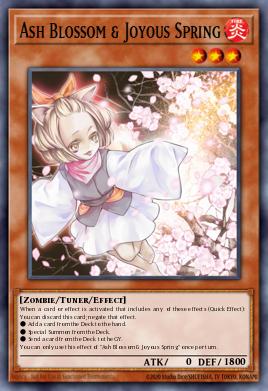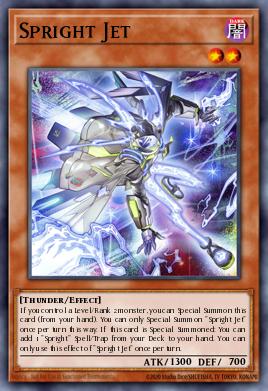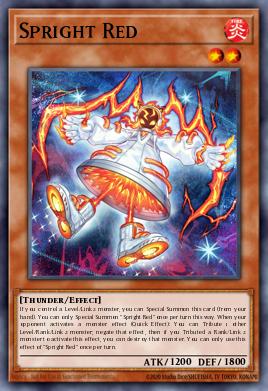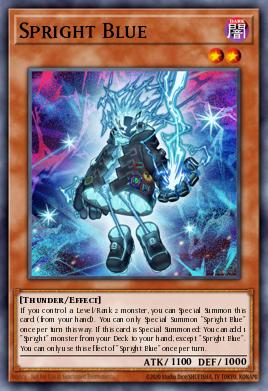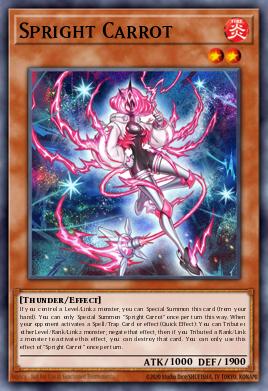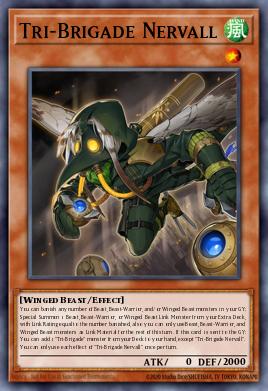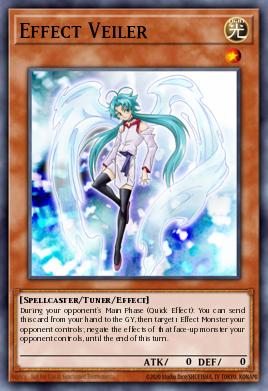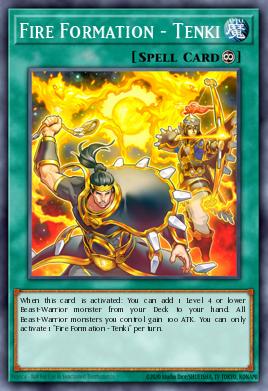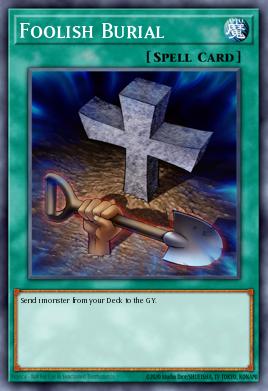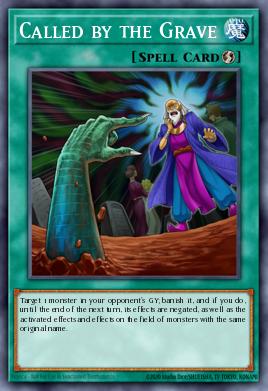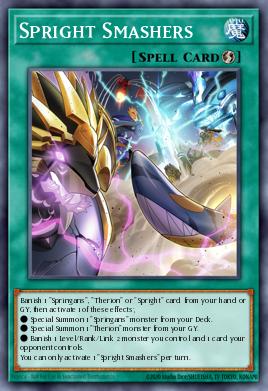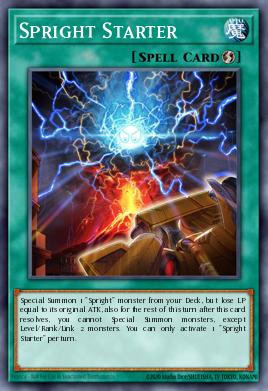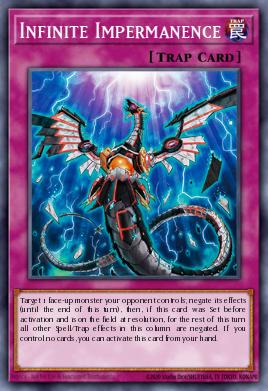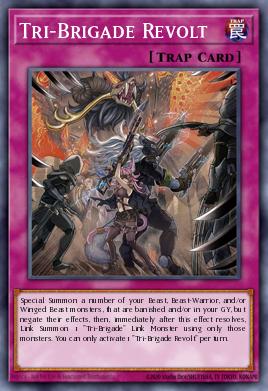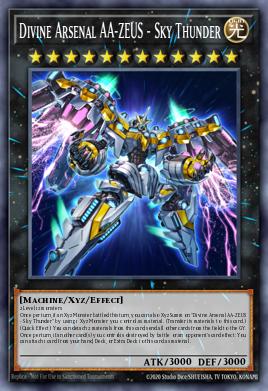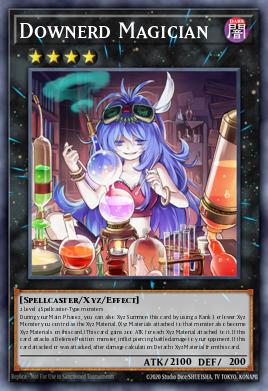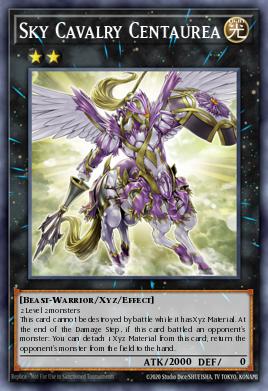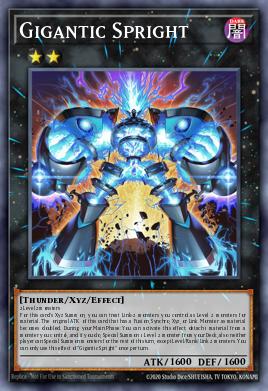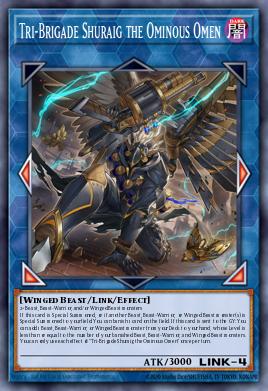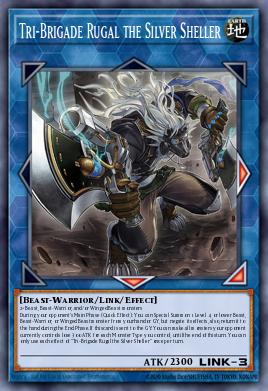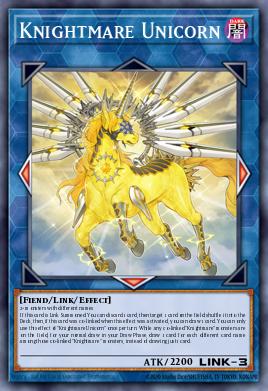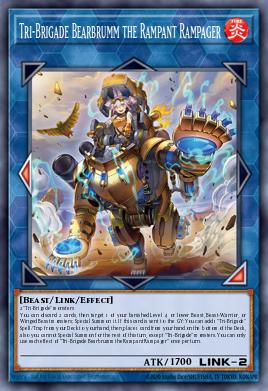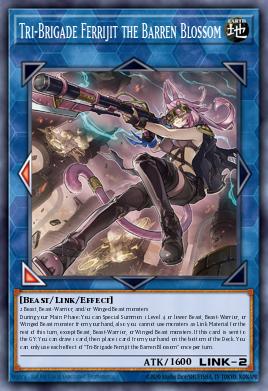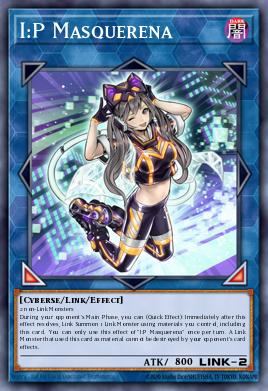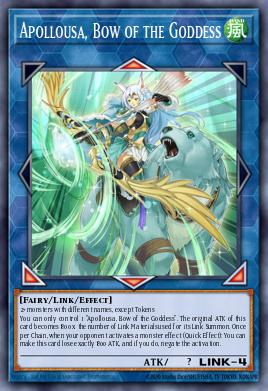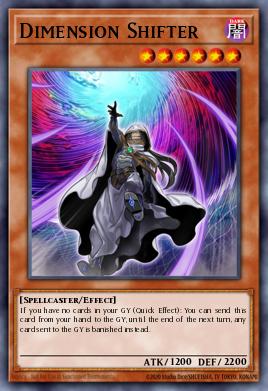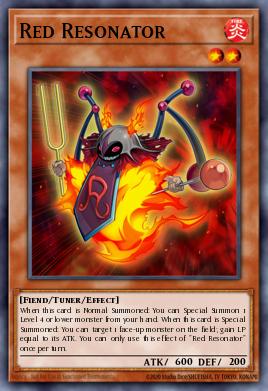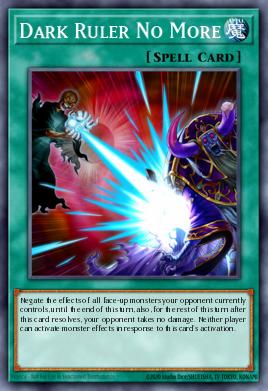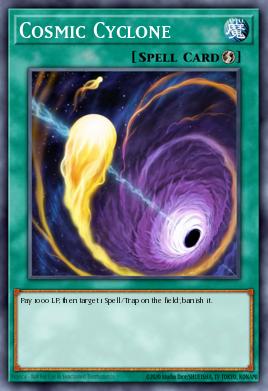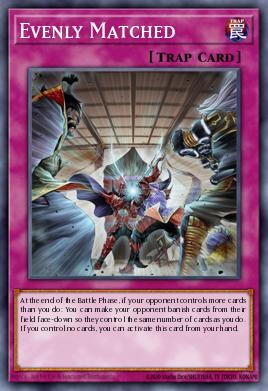Tri-Spright is a hybrid deck built on the Tri-Brigade and Spright archetypes. The Tri-Brigade archetype plays around level / link two monsters such as Kitt or Kerass and Ferrijit or Bearbrumm. Spright plays hand in hand with these two-axis strategies providing extenders, additional negates, and potential negates to go with another level two engine. One supplemental thing I've done in this deck is include the Iblee lock. I'm not a fan of floodgates nor do I beleive that the Iblee line is the best option the deck offers, but I wasn't sure what to run in the final slots of the deck. I was at 38 cards and I looked through all of my level two monsters in my physical collection. I came across Knightmare Corruptor Iblee and Click and Echo. Both function similarly, but Iblee locks the opponent and Click and Echo forces the controler to reveal their hand. I tested both, but ultimately Ckick and Echo does more harm and functions as a hard brick. Iblee has other effects making it worth playing. I decided on Foolish Burrial as it helps you access your Tri-Brigade engine if you don't draw into it. Spright Sprind does the same thing, but I don't own a Sprind so Foolish will have to do for now.
Something to be aware of with this deck is the locks. Tri-Brigade likes to lock itself into "Tri-types" which as Beast, Beast-Warrior, and Winged-Beast. Spright does not fall into the Tri-type category and as such you need to structure your plays accordingly. The main Tri-type lock happens when activating the on field effect of a Tri-Brigade monster which banishes Tri-type monsters from the grave to link summon a Tri-Brigade monster. These effects ensure you can only use Tri-type monsters as link material for the turn. Spright also locks you in a few places. Spright Starter locks you to level / rank / link two monsters as does Gigantic Spright's effect to summon from the deck.
There are a few main lines of play in this deck. My go-to in solitare testing has been to open with the Tri-Brigade advantage loop to establish Kerass on field, follwed by a Spright line, before ending with a Tri-Brigade line to search Revolt to set up disruption. The following sample line could be optimized to play around the opponent's cards better like trying to summon Iblee before establishing the Kerass to protect it from an Imperm. Assuming the opening hand is something like three non-engine (Imperm, Ash, Called By The Grave), Tri-Brigade Fraktall, and Spright Blue, the line of play could be something like:
1) Fraktall effect to send Kitt to the grave
2) Kitt effect to send Nervall to the grave
3) Nervall effect to search Kerass
4) Normal summon Kerass
5) Special Spright Blue using its own effect, then search Spright Jet
6) Special Spright Jet using its own effect, then search Spright Starter
7) Activate Spright Starter to summon either Carrot or Red depending on the match-up (I prefer Red at the moment as monster effects are more prevalent at the moment)
8) Overlay Blue and Jet to summon Gigantic Spright
9) Gigantic Spright effect to detach one and summon Iblee from the deck
10) Link Iblee and Gigantic Spright to summon I:P Masquerena, triggering Iblee's effect to summon itself to the opponent's field
11) Activate Kerass effect to banish two Tri-Brigades in order to summon Brearbrumm
12) Link Bearbrumm and Kerass into Ferrijit to search Revolt and return the lowest impact non-engine card to the deck
This line ends on two cards in hand, I:P masquerena, a Spright with a negate, a Tri-Brigade Revolt set, and a link two monster. I:P Masquerena can then link the link two into an Apollousa on the oponent's turn, or if the Ferrijit is used to activate the Spright negate, then Masquerena can be used to go into Knightmare Unicorn to spin a card. The disruption provided by this deck is not linear, it's not a handful of omni-negates, it provides a diverse set of options that need to be carefully considered before use, otherwise your disruptions can amount to nothing.
 Cool
0
Cool
0
 Funny
0
Funny
0
 Angry
0
Angry
0
 Sad
0
Sad
0



